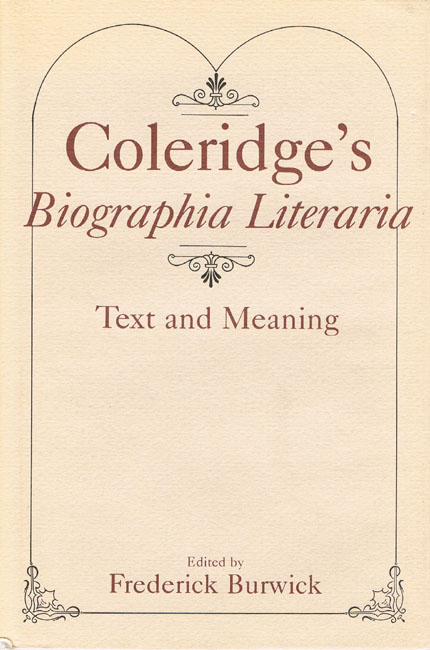Coleridge’s Biographia LiterariaText and MeaningEdited by Frederick Burwick |
 1989 Literary Criticism / European / English, Irish, Scottish, Welsh 338 pp. 6x9 |
|||
|
read the full text of the book •
|
“This book admirably succeeds in helping readers to approach the Biographia Literaria intelligently and appreciate and understand Coleridge’s goals, methods, arguments, and achievements in it. It de–mystifies the text and opens up new areas of investigation for the reader. Coleridge’s Biographia Literaria will provide a genuine catalyst for new work on Coleridge’s curious masterpiece and also set the standards for that work.” —Beth Darlington, Vassar College To understand the Biographia Literaria, it is necessary to explain Coleridge’s process of assimilating and editing the texts and to examine the problems of interpretation that result. The fourteen scholars who have contributed to Coleridge’s Biographia Literaria provide specific strategies for evaluating and interpreting Coleridge’s principles. Coleridge begins the Biographia Literaria with the statement that principles not his own have been attributed to him, and he therefore presents his biographical narrative “as introductory to a statement of my principles in Politics, Religion, and Philosophy, and an application of the rules, deduced from philosophical principles, to poetry and criticism.” Thirty years later, when Sara Coleridge prepared the second edition, her primary purpose was to explain the presence of those passages not his own that her father had nevertheless incorporated into the exposition of his own ideas. For subsequent editors, the problems have increased. Along with the awareness of how Coleridge himself edited the Biographia from his own notebooks came the discovery of a far more complex fabric of sources than had been previously recognized. Frederick Burwick is Professor of English and Comparative Literature at the University of California, Los Angeles. He is the author of The Damnation of Newton, The Haunted Eye, and Approaches to Organic Form, and coeditor of Hebrew Melodies. | |||

